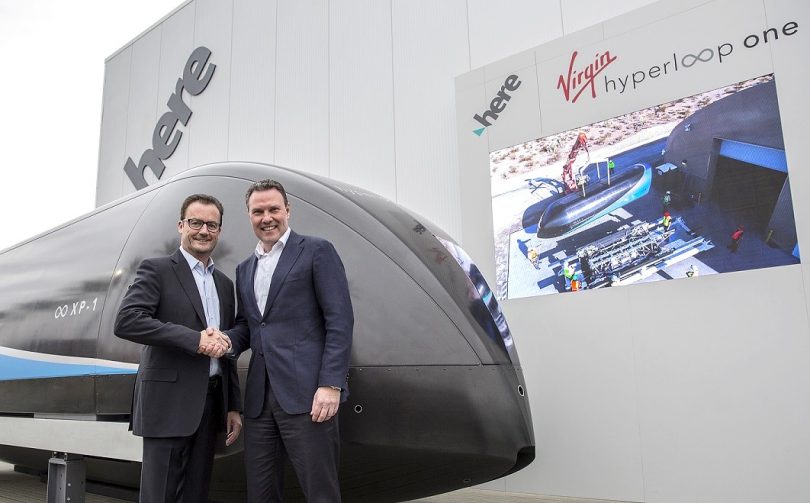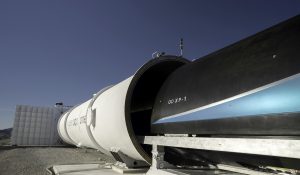Virgin Hyperloop One, the only company in the world that has built a full-scale hyperloop system, is demonstrating the first-ever hyperloop passenger application, powered by HERE Technologies. The app utilizes HERE’s location platform to simplify and personalize hyperloop trip planning across multiple modes of transportation.
In the first demonstration of the Virgin Hyperloop One passenger experience, the company is showcasing its application designed for real-time, on demand travel, throughout the transportation ecosystem. Passengers will be able to plan, book, and pay for a hyperloop journey and other modes of transportation including public, private, and ride-shares using the application.
The application is the latest to be released using HERE Technologies’ Mobile Software Development Kit for Business which enables detailed location, mapping, and navigation capabilities for 136 countries, public transit information for more than 1·300 cities, and 3D indoor and venue maps.
The application will feature end-to-end route navigation including, for the first time, turn-by-turn indoor walking directions to help passengers negotiate large transit centers, venues, shopping centers, and airports. Passengers can customize their travel preferences by choosing route example options such as the fastest, cheapest, and greenest. The application will be made available to the public in 2018.
“Hyperloop is not just about A to B, it’s an end-to-end passenger experience — that means no waiting at any point along the journey,” said Matt Jones, Virgin Hyperloop One’s SVP Software Engineering. “HERE shares our vision for optimizing travel. We will redefine the passenger experience by offering real time, on demand travel connecting hyperloop, other modes, and even indoor walking directions.”
“This collaboration demonstrates the future of transportation and mobility,” said CEO of HERE Technologies, Edzard Overbeek. “Supported by our open location platform, Virgin Hyperloop One is showing how its groundbreaking mode of transportation will be seamlessly integrated into an end-to-end, multimodal travel experience that will redefine all notions of personal mobility.”
Additionally, the Virgin Hyperloop One XP-1 pod used in recent phase three testing where the company achieved record speeds of 387 kilometers per hour (240 miles per hour) will be unveiled to the public for the first time at CES at the HERE Technologies Booth (#CP-2). The Virgin Hyperloop One XP-1 Pod is the first-generation design of the passenger or cargo pod of a Virgin Hyperloop One system. It is the only full-scale pod in the world that, combined with the company’s proprietary electric motor, achieves autonomous high-speed propulsion and levitation in a controlled low-pressure environment.
“We’re giving the public a taste of what a Virgin Hyperloop One experience will be like by publicly unveiling our pod and demonstrating how passengers will experience booking a hyperloop trip from their pocket,” said CEO of Virgin Hyperloop One, Rob Lloyd. “Every hardware and software milestone brings us closer to commercializing hyperloop.”
Virgin Hyperloop One has set a historic test speed record of nearly 387 kilometers per hour (240 miles per hour, 107 meters per second) during its third phase of testing at DevLoop, the world’s first full-scale hyperloop test site. The company achieved faster speeds and tested a new airlock which helps transition test pods between atmospheric and vacuum conditions during its latest test campaign which was completed on 15 December 2017. All components of the system were successfully tested including the airlock, highly efficient electric motor, advanced controls and power electronics, custom magnetic levitation and guidance, pod suspension, and the vacuum.
The tests were conducted in a tube depressurized down to the equivalent air pressure experienced at 200·000 feet (60·960 meters) above sea level.
See also: – Hightech in der Röhre: Studenten-Projekt Hyperloop







